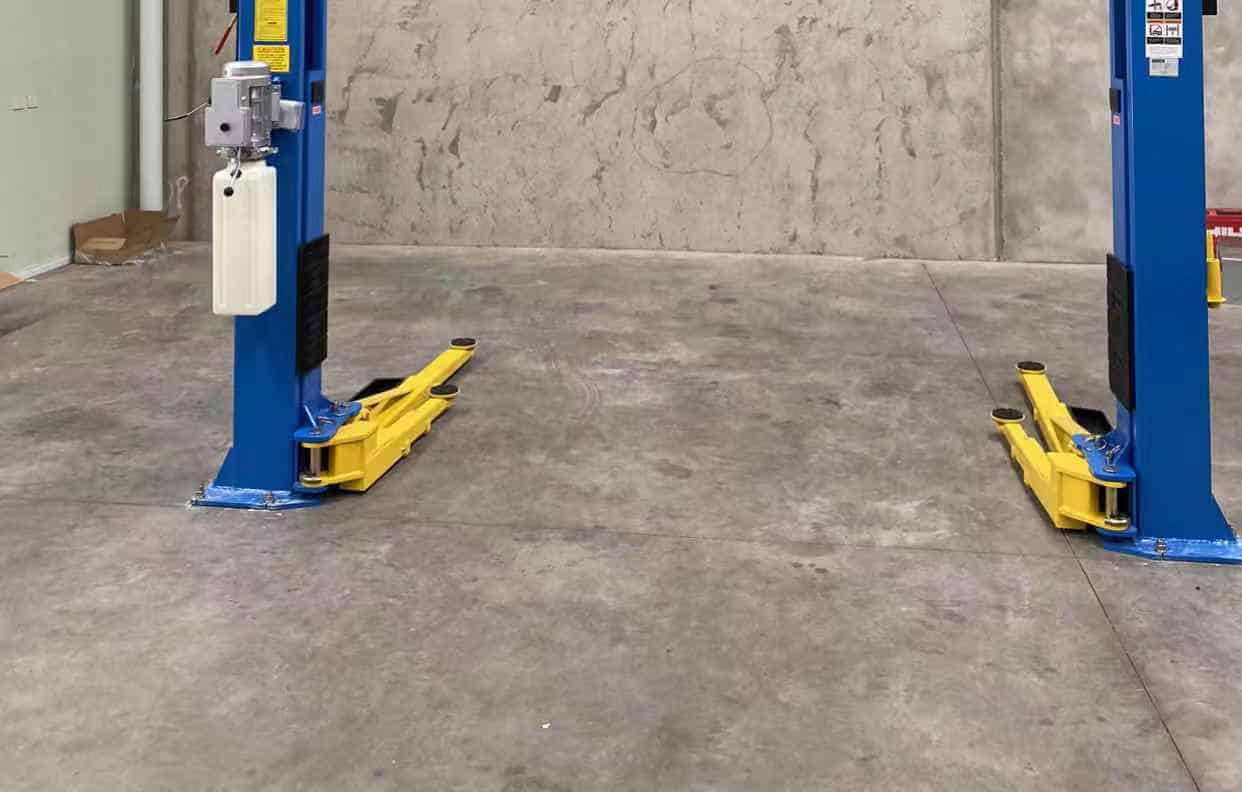Asymmetric vs Symmetric 2 Post Car Hoists
Symmetric and asymmetric refer to the arm configuration of the car hoist. In simple terms, symmetric hoist have front and rear arms that are identical in design and length, while asymmetrical lifts feature different arms at the front and the back.
Some hoist manufacturers refer to symmetrical and asymmetrical Hoists in reference to the angle at which the posts are installed, though this type of installation is not common. At classic lift Australia, our two-post baseplate or overhead and free-standing lifts are all installed with the posts parallel, so we will only consider this configuration.
Years ago, most garage hoists were single-column lifts built into the ground.
The solution was the creation of above-ground post Hoists. Originally available only in a symmetrical configuration, with certain vehicles, the central position of the posts made it difficult to exit and enter the vehicle when positioned for lifting. This is why the asymmetrical lift was created. It can accommodate different types of vehicles without blocking the doors.
While both types of Hoists have adjustable arms that allow for some variation, it’s a good idea to choose your lift according to the most common type of vehicle you will lift. If you work mostly on large pickup trucks, for example, choose a lift that suits the size and weight of that vehicle. You can always adjust your lift for smaller vehicles when they come in.
Asymmetrical Car Hoists
Asymmetrical 2 Post Hoists require you to position the car, truck, van, or SUV with The shorter lift arms are to the front, where most of the weight is, while the longer rear arms are to the back. This allows your vehicle to sit well-balanced on the lift and usually means the front doors clear the posts for opening and closing. This is especially practical if you raise and lower a large number of vehicles every day and want to quickly get in and out, instead of trying to squeeze into the car because the doors won’t open fully.
You can create a nearly symmetrical lift configuration by shortening the rear lift arms and bringing them in closer to the midline of the vehicle. This means that you can accommodate longer and heavier vehicles when you need to, but still have the convenience and ease of an asymmetrical lift for the bulk of your smaller vehicle lifting needs.
As with symmetrical Hoists, it’s always important to follow standard lift loading and lifting procedure. Take care to position the lifting arms and pads under the vehicle’s lift points to avoid damage and to reduce your risk of an accident. When your lift is on the ground, swing your asymmetrical lift arms around instead of leaving them in the middle so you have more space to walk around your lift.

Symmetrical Car Hoists
Symmetrical Car Hoists, in general, are best suited to long and heavy vehicles like trucks, vans and SUVs, especially if they’re loaded. You need to start with a two-post lift that’s wide enough to accommodate large vehicles. The symmetrical lift arms can be folded back to allow for easy passage of your vehicle.
In general, you position the vehicle so the posts are roughly in the middle. That means you can open the front doors and get out after positioning the vehicle for lifting.
With your vehicle in place, you swing the lift arms into place. Trucks and SUVs with high ground clearance may require special adaptors to reach the frame lift points. While the lift arms are of asymmetrical design, meaning the front and rear arms are of the same shape and length, they also include portions that can be extended to accommodate a wide range of vehicles.
If the vehicle you’re lifting is unloaded in the rear or is a long pickup with no weight in the rear, you may need to adjust the position of the truck slightly. Always follow standard lift practices and ensure that the vehicle is properly balanced as you start lifting. Most symmetrical lifts are of the overhead type, so pay attention to height clearance — especially with tall vehicles.
